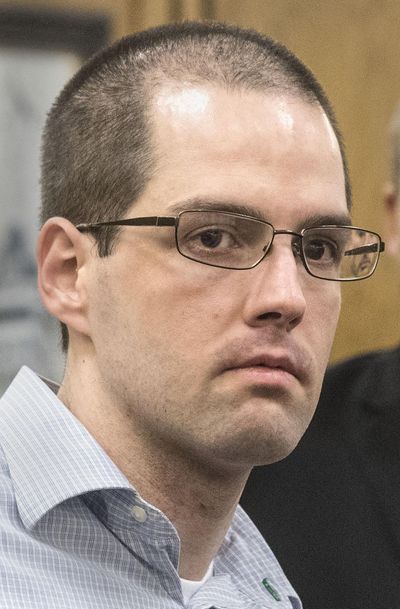Triple-murder suspect Roy Murry’s first wife describes ex-husband’s behavior and weapons

Whenever Roy H. Murry would come home to the Tacoma apartment he shared with his first wife, the Iraq War veteran would pull his sidearm and duck behind a half wall.
Murry, 31, would then proceed in a defensive posture to search every hall, room and closet until he could declare the home clear, according to Erica Montgomery, who left Murry in 2007 and divorced him in 2008.
When Montgomery took the witness stand Monday, she cried as she faced the man who is now charged with killing three members of the family of his second wife, Amanda Murry, who is expected to testify on Tuesday.
Montgomery explained how she met Murry at a youth group function when she was in the sixth grade. They didn’t start formally dating until Murry had been deployed to Iraq. After he returned from the war, Murry proposed to Montgomery in 2005 at a shooting range.
“Any time we would walk into a building, he would look to see where the cameras were hidden,” she said. “He taught me how to shoot, how to use all the weapons in our home.”
And weapons were everywhere. In their car, Murry kept three or four guns and several knives as well as extra gasoline, military-issued meals, road flares, IV fluids, bandages, extra water, blankets, maps and body armor.
“Probably once a week he would … clear the house,” Montgomery said, describing his armed searches.
Superior Court Judge John O. Cooney previously denied a prosecution request to allow testimony about what Montgomery told investigators regarding her separation from Murry.
“Mr. Murry told her they would not get a divorce but that she would die first,” Spokane County Prosecutor Larry Haskell said, according to court records.
Defense attorney Jill Gannon-Nagle argued again Monday to prevent Montgomery’s testimony on the basis that she hadn’t talked to Murry for at least eight years prior to the killings.
“Anything that occurred during their marriage … is not relevant to the charges he is facing,” she said. “It’s the state’s attempt to pile on.”
Cooney agreed to allow Montgomery to testify to allow the prosecution to develop its theory of the case. One of those issues is how Murry handled shell casings.
“There is not a lot of evidence at the scene to connect” Murry to it, Cooney said. “How he handled shell casings could be relevant for why no evidence was found at the scene.”
However, Montgomery later testified that she saw Murry wipe shell casings during the time he was reloading the spent casings back into usable bullets, not when he was shooting at the range.
The prosecution also called a longtime friend of Murry’s, Michelle Filler, who said she spoke to Murry just days after the killings occurred in the rural Colbert home on May 26, 2015.
Murry had lost weight, cut and dyed his hair and was wearing different clothes, Filler said.
“He said because people were after him he had to keep a low profile,” Filler said. “It just seemed crazy. Nothing he said the last time I saw him was making any sense.”
Murry told Filler that he and Amanda Murry had discussed divorce.
Asked about Amanda Murry’s stepfather, mother and brother, Filler replied: “He said they were part of the problem, too, and that they were on her side.”